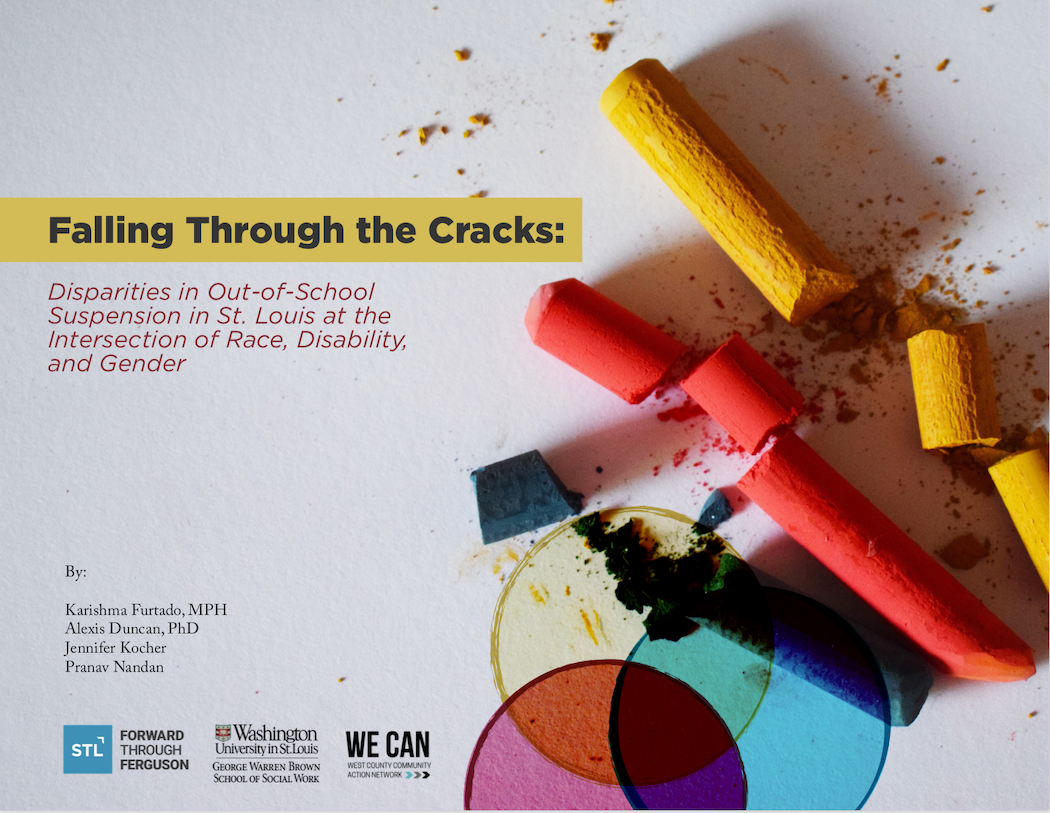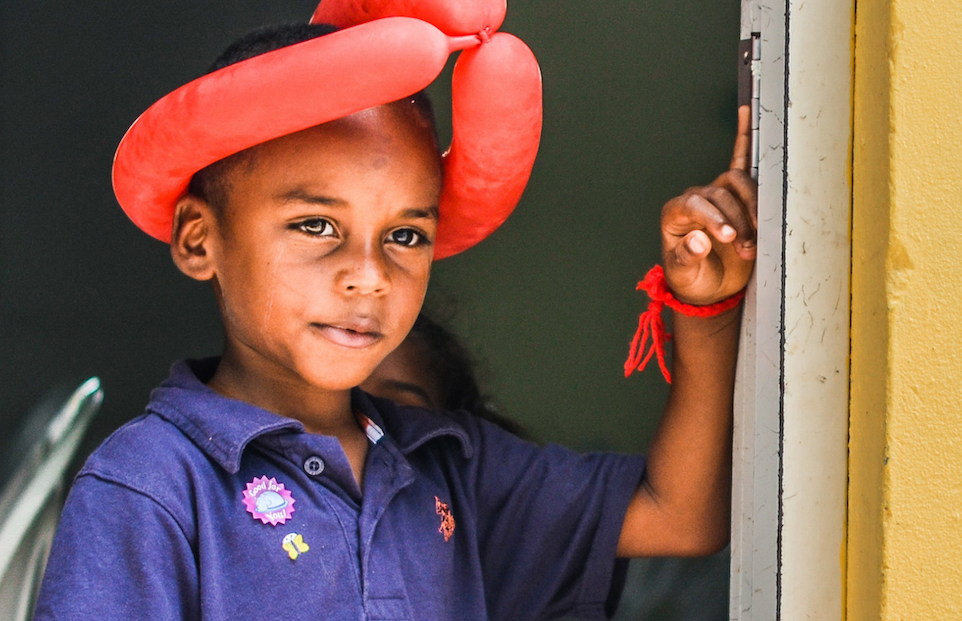Falling Through the Cracks: St. Louis School Discipline at the Intersection of Race, Gender, and Disability

Download the “Falling Through the Cracks” Report
Find Your District’s Out-of-School Suspension Profile
In St. Louis schools, some students are far more likely to be suspended than those least at risk—20, 30, even 60 times more likely. In a new study, “Falling Through the Cracks: Disparities in Out of School Suspension in St. Louis at the Intersection of Race, Disability, and Gender,” we found that being black, male, or having a disability places students at greater risk of out-of-school suspension (OSS). However, when all three factors (race, sex, and disability) were taken together, the numbers drastically increased.
“As a region (and a nation) we do not adequately resource education. The discipline gaps are not simply a failure on the part of educators—they are the result of systems failures. Sure, we might not all be the ones disciplining students, but we have failed to build an education system that prevents these disparities, and we have failed to correct that system when they emerged.” –Falling Through the Cracks

Using publicly available data from the 2015-16 school year, Furtado, Brown School associate professor Alexis Duncan, and their co-authors parent advocate Jennifer Kocher and Brown School master of public health candidate Pranav Nandan, investigated how race, sex, and disability came together to affect risk of OSS for kindergartners through 12th graders in the St. Louis region. They focused on the 30 public school districts located primarily in St. Louis City, St. Louis County, and St. Charles County to align with previous work by the Keep Kids in Class Coalition.

The findings showed that while White girls with a disability were only 1.4 times as likely to receive an OSS than the least at-risk students (White girls with no disabilities), White boys without a disability were 2.7 times more likely to receive an OSS. White boys with a disability were 9.1 times more likely. Black girls without a disability were 11.0 times more likely. Black girls with a disability were 18.1 times more likely. Black boys without a disability were 18.3 times more likely. The most at-risk students, black boys with disabilities, were 24.6 times more likely than white girls with no disability.
“A person could smoke a pack of cigarettes every day for 30 years and face a lower risk of getting lung cancer than the risk of OSS for a Black boy with a disability. In some districts, Black boys with disabilities are 40-, 50-, even 60 times more likely to get an OSS than a White girl without a disability.”–Falling Through the Cracks

The relative risk of out-of-school suspension for students across gender, race, and disability compared to the lowest risk group, White girls without a disability.
The report also discusses evidence-based strategies for closing the discipline gap and calls on parents, teachers, and district leaders to redouble their efforts to implement them. Effective preventative measures include trauma-informed practices, positive behavior interventions and supports, social-emotional learning approaches, and better using Individualized Education Programs to support children with disabilities. The report suggests that school districts and community members should work together to promote restorative alternatives to suspension, reduce disparities, manage biases, and prevent challenging behaviors.
School District’s Out-of-School Suspension Profiles
The report includes out-of-school suspension data for 30 school districts, primarily located in St. Louis City, St. Louis County, and St. Charles County.
